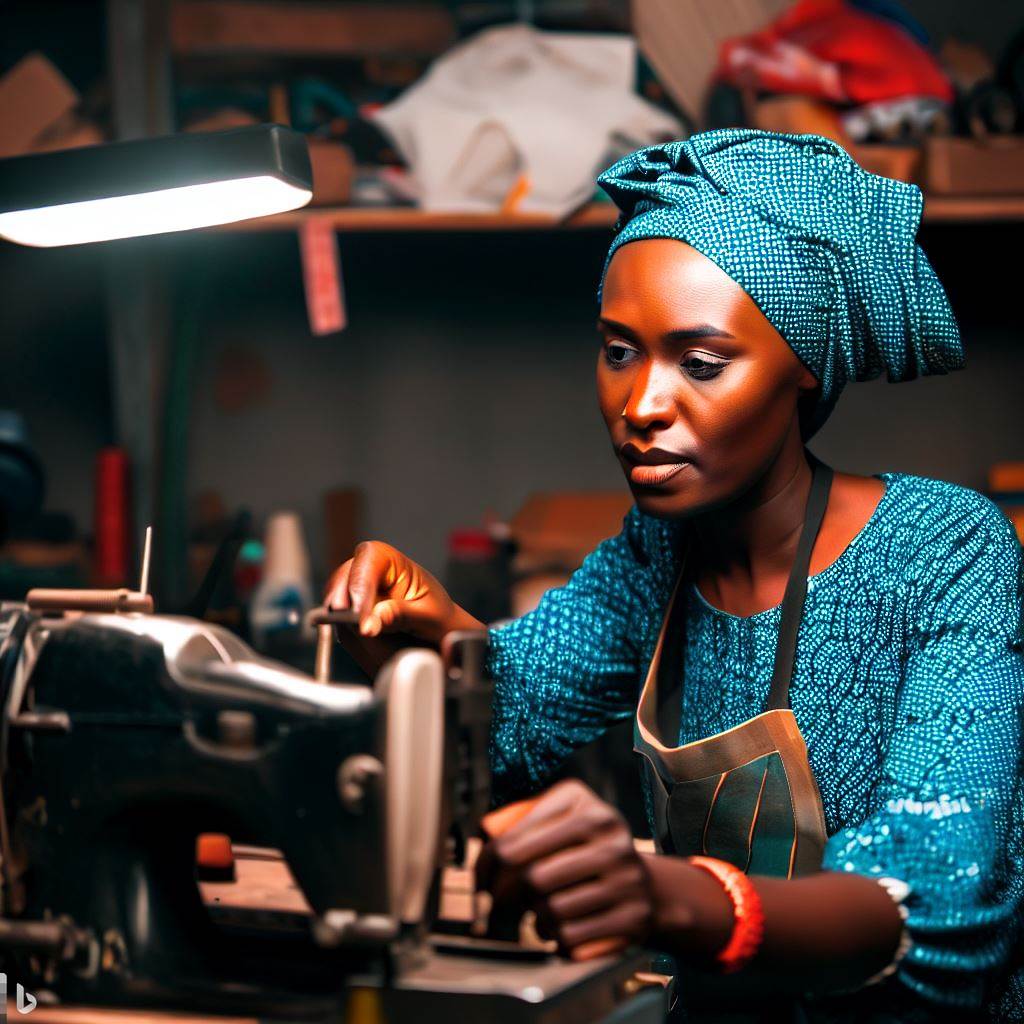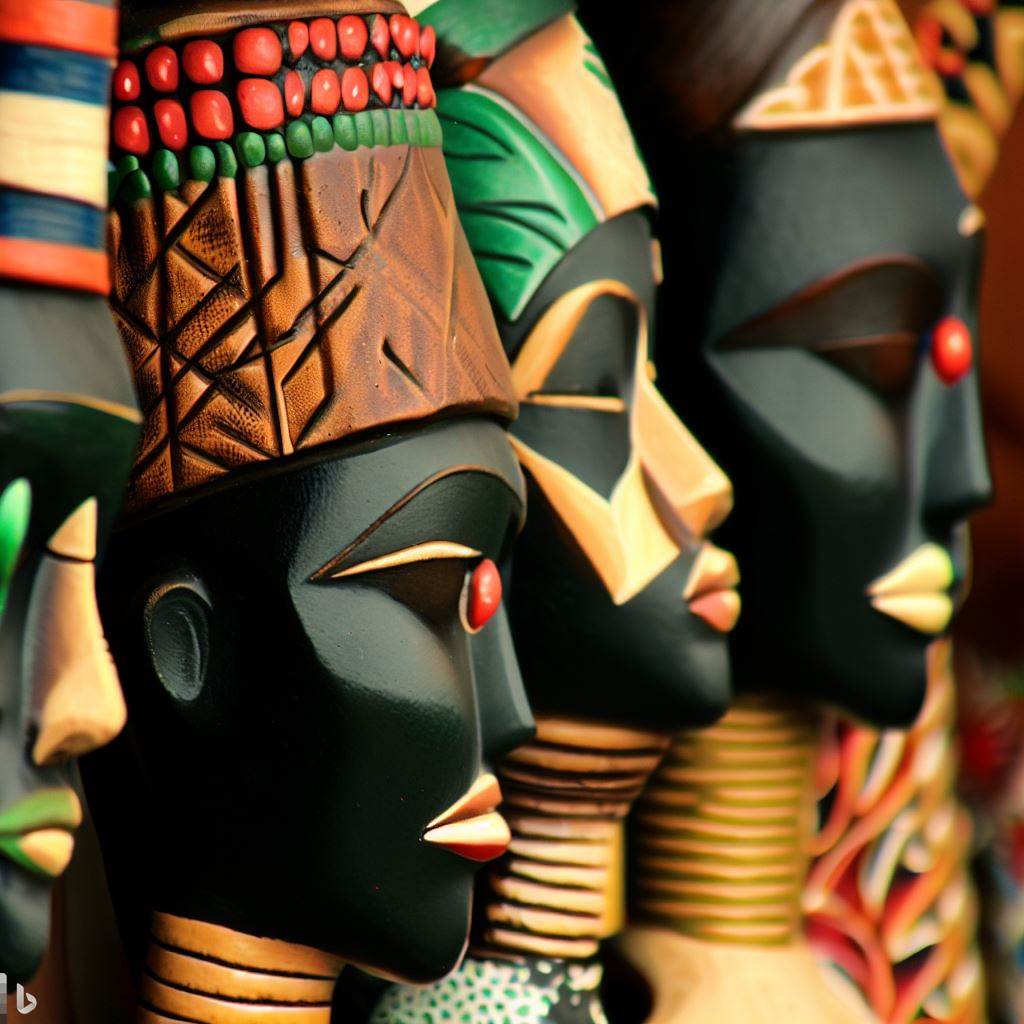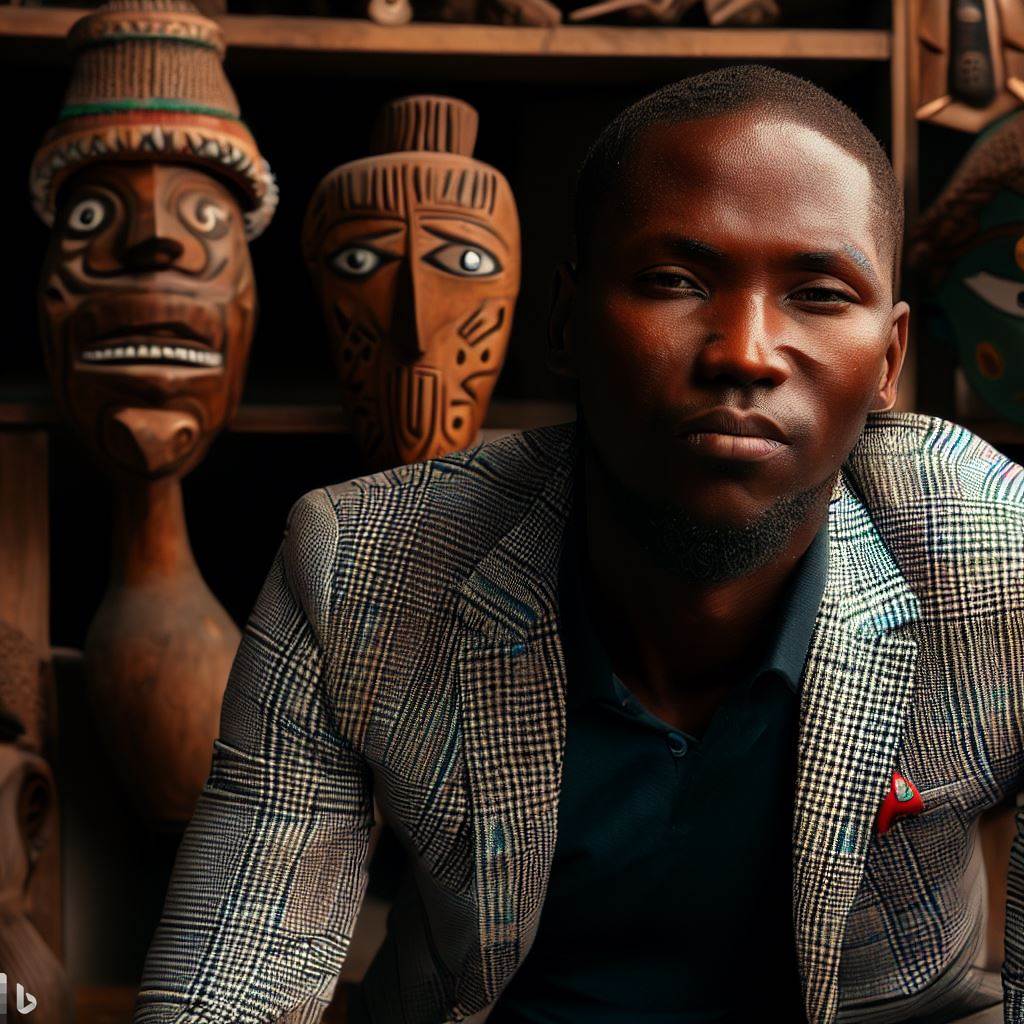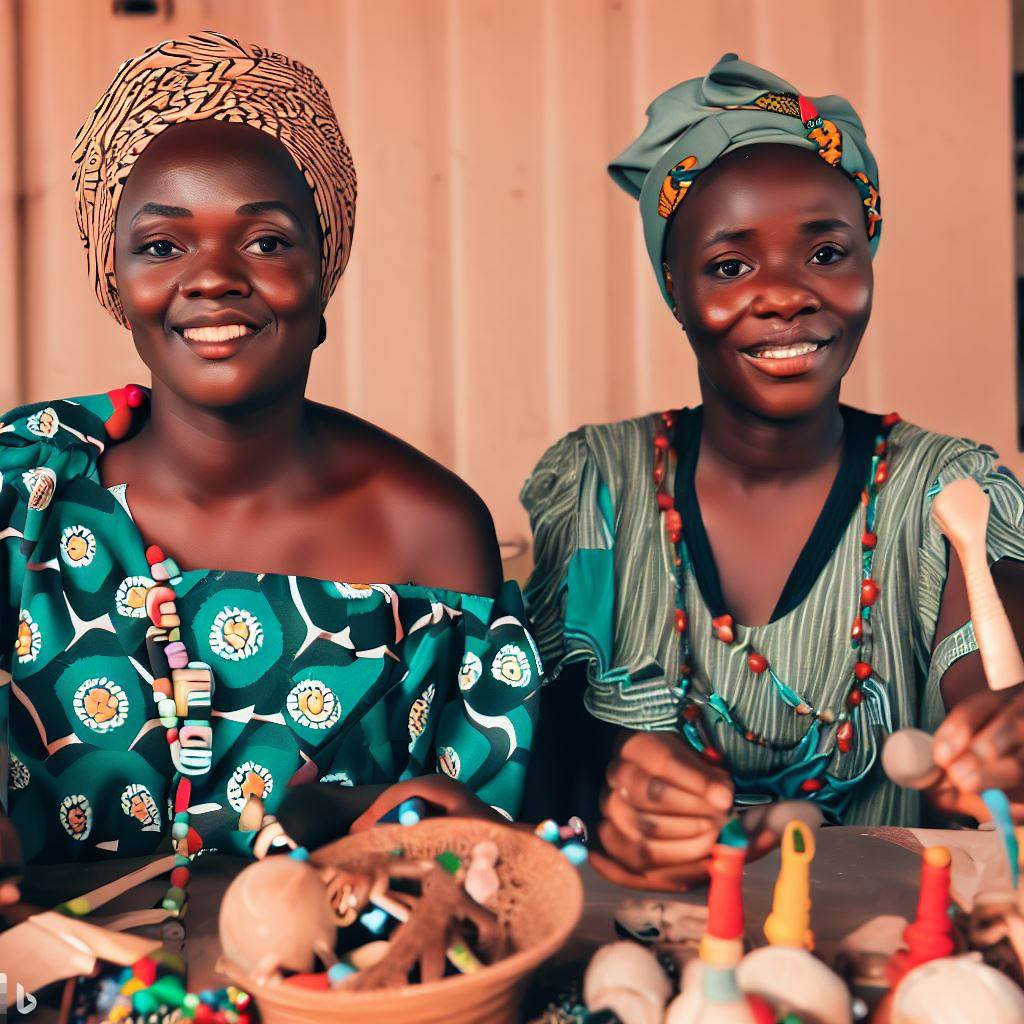Introduction
The Purpose of the Blog Post
Craftsmanship in Nigeria has been a significant part of the country’s culture and identity. However, the traditional arts in Nigeria have been facing challenges due to modernization and globalization.
Hence, the primary purpose of this blog post is to discuss how Nigerian craftsmen are innovating in traditional arts.
Brief Overview of the Traditional Arts in Nigeria
Nigeria is a country with more than 250 ethnic groups, each with its unique traditional art forms, including pottery, weaving, carving, and painting.
These art forms have been passed down from generation to generation and have been critical in defining the Nigerian culture.
The Importance of Innovation in Nigerian Crafts
Innovation is essential in ensuring the survival of traditional arts in Nigeria. As modernization and globalization continue to influence Nigerian culture, innovation in traditional crafts can help preserve and promote these arts.
By innovating, Nigerian craftsmen can create new designs, materials, and applications, attracting new customers and expanding market opportunities.
To conclude, this blog post aims to shed light on the innovation efforts taking place in traditional arts in Nigeria. It is important to recognize and support the work of Nigerian craftsmen as they strive to ensure the preservation and revitalization of Nigeria’s cultural heritage.
The History of Nigerian Traditional Arts
Overview of Nigerian Traditional Arts
Nigeria is a country of over 200 million people with various ethnic groups, and each group has a unique cultural heritage.
Traditional arts in Nigeria reflect the country’s diverse ethnic and cultural history. Nigerian traditional arts encompass various artistic expressions, including pottery, weaving, carving, brass casting, beadwork, and painting.
The Evolution of Nigerian Traditional Arts
Traditional arts in Nigeria are believed to have originated from the pre-historic era. Discoveries of ancient pottery, sculptures, and rock paintings in some parts of the country attest to this fact. The earliest forms of traditional arts in Nigeria were mainly used for ritual and spiritual purposes.
As civilization progressed, traditional arts became a medium for social, economic, and political expression.
The influence of colonialism on traditional arts in Nigeria cannot be overemphasized. The British colonial government discouraged traditional arts and made a concerted effort to replace them with Western art forms.
This move almost resulted in the extinction of Nigerian traditional arts. However, after Nigeria’s independence in 1960, traditional arts made a resurgence, and the government began providing support through various initiatives.
The Intergenerational Transfer of Skills
The intergenerational transfer of skills is an essential aspect of traditional arts in Nigeria. The traditional arts are usually passed down from generation to generation through a master-apprenticeship system.
Younger artists learn the ropes of their craft from a more experienced master craftsperson, and they, in turn, pass on the skills to the next generation. One of the unique things about Nigerian traditional arts is the level of detail and sophistication involved in the production process.
Most of the materials used in traditional arts are locally sourced, and very little machinery is used, making the arts an entirely handcrafted affair. The skill and expertise required to produce traditional arts take years to acquire.
The apprenticeship system ensures that the younger generation learns not only the technical skills but also the cultural and spiritual significance of the craft. This system ensures the continuity of traditional arts in Nigeria.
In essence, Nigerian traditional arts are an integral part of the country’s cultural heritage.
The evolution of traditional arts in Nigeria has been influenced by various factors, including colonialism and government support. The intergenerational transfer of skills has ensured the continuity of traditional arts and has kept the country’s diverse cultural heritage alive.
The innovative approaches taken by Nigerian craftsmen in transforming their traditional arts have helped to keep the tradition relevant and attractive to a wider audience.
Read: Prospects and Challenges: Craftsmanship in Nigeria
The Role of Nigerian Craftsmen in Innovation
Art is an essential part of Nigerian culture, and the country is known for its rich tradition of craftsmanship.
Over the years, Nigerian craftsmen have been innovating traditional arts, weaving modern elements into age-old techniques to create unique and contemporary pieces.
In this section, we’ll look at the role of Nigerian craftsmen in innovation, the importance of innovation in traditional arts, the challenges they face, and the impact of innovation on Nigerian craftsmen.
The Importance of Innovation in Traditional Arts
Innovation is crucial in traditional arts, especially in a world that is continually evolving and changing.
It adds freshness and renewed relevance to ancient techniques, creating a bridge from the past to the present. Nigerian craftsmen who innovate traditional arts contribute to the preservation of Nigeria’s cultural heritage while adapting to new trends and markets.
By incorporating modern materials and techniques, Nigerian craftsmen can attract wider audiences and markets, ensuring the sustainability of their craft. Innovation also offers a way for craftsmen to express their creativity and showcase their skills at a higher level.
The Challenges that Nigerian Craftsmen Face
Although innovation plays a vital role in the development of traditional arts, it is not without challenges.
One of the most significant challenges faced by Nigerian craftsmen is the lack of recognition and appreciation for their work. Many people tend to view traditional art forms as outdated, and so craftsmen struggle to find a market for their creations.
Additionally, the cost of materials and tools required for their craft has increased, making it harder for craftsmen to sustain their work.
Finally, the lack of government support for traditional arts can lead to a lack of resources for training, exhibitions and access to international markets.
The Impact of Innovation on Nigerian Craftsmen
Innovation has had a profound impact on Nigerian craftsmen’s work, their livelihoods, and the Nigerian cultural landscape.
Innovation has given traditional arts new life, increasing the potential for marketability, creativity and cultural relevance by adapting their techniques and finding new applications for their skills, craftsmen are more likely to reach wider markets and receive recognition for their work. The impact of innovation on craftsmen’s livelihoods can be seen in the increase in demand for their work, leading to a more sustainable livelihood and a chance to preserve their rich heritage.
Moreover, the impact of innovation extends beyond the craftsmen themselves. It contributes to preserving Nigeria’s cultural heritage by acknowledging the traditions passed down through generations and adapting to a globalized world. It contributes to Nigeria’s economy by creating job opportunities and increasing the potential for export.
Finally, innovative traditional arts are essential to Nigeria’s image and soft power as craftsmen bring a unique perspective to contemporary art, design and aesthetics, positioning Nigeria at the forefront of cultural innovation.
Nigerian craftsmen play a critical role in innovation in traditional arts.
Despite the challenges they face, craftsmen continue to push boundaries, experimenting with new techniques, materials and applications to preserve and renew Nigeria’s cultural heritage. Innovation contributes to the ailing traditional arts sector by increasing creativity, marketability, and cultural relevance.
Ultimately, the innovation in traditional arts proves that culture is not static, but a dynamic and evolving entity that is crucial to modern societies’ identity and cultural heritage.
Read: Preserving Nigerian Craftsmanship: A Call to Action
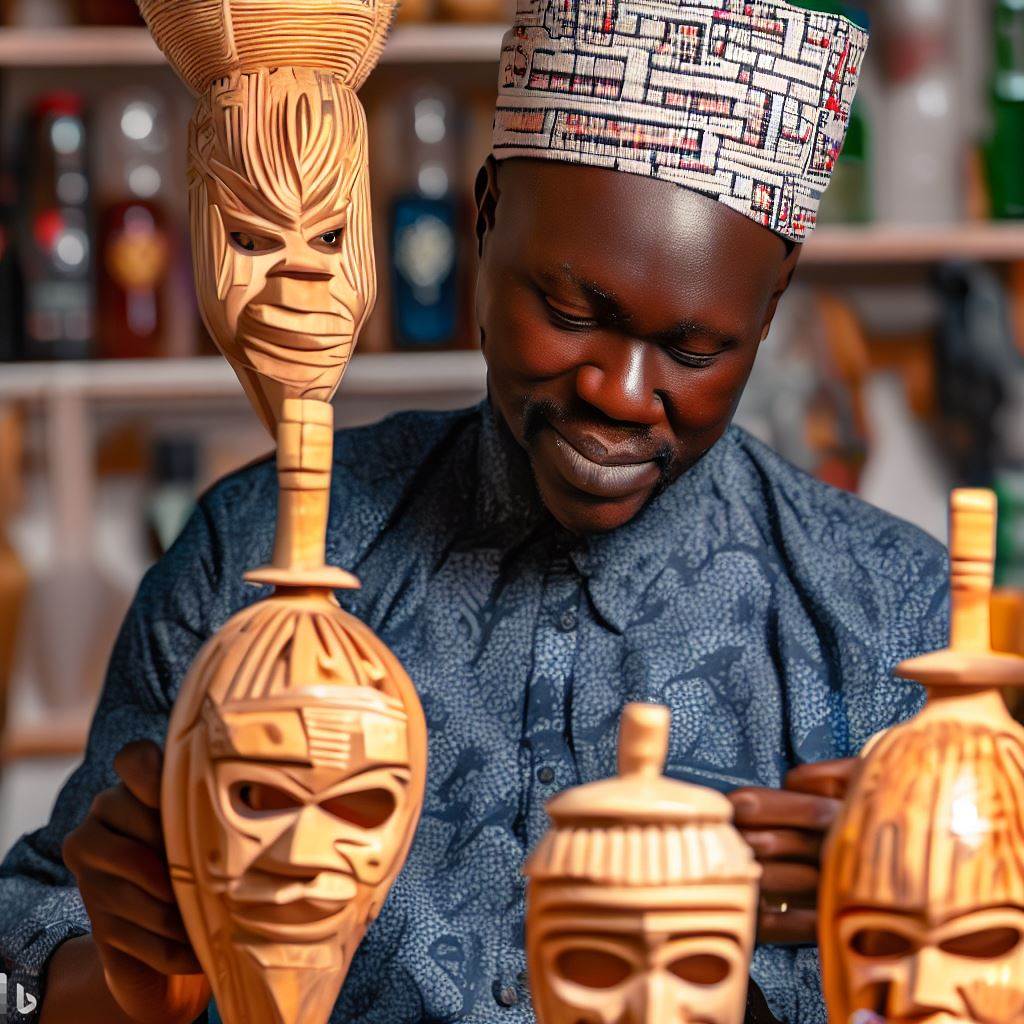
Nigerian Craftsmen and their Innovative Techniques
For centuries, Nigerian craftsmen have been well-known for creating intricate and beautiful works of art using traditional methods and materials.
However, in recent years, there has been a noticeable trend towards innovation and experimentation among Nigerian craftsmen.
This has resulted in new and exciting forms of traditional art that are keeping the craft alive and relevant.
The Use of New Materials
One of the ways Nigerian craftsmen are innovating traditional arts is by incorporating new materials into their work.
For example, many weavers are now using synthetic fibers, such as nylon and polyester, in addition to natural fibers like cotton and wool. These synthetic materials offer a range of benefits, such as greater durability and resistance to fading. Another example of traditional arts being updated with new materials can be found in the art of beadwork.
In the past, Nigerian beadwork was largely limited to using glass beads sourced from Europe.
However, craftsmen are now experimenting with using locally-sourced materials, such as seeds, nuts, and shells, to create intricate patterns.
The Re-imagining of Old Techniques
Another way Nigerian craftsmen are innovating is by re-imagining old techniques.
For example, the ancient practice of indigo dyeing has been given new life by craftsmen who are using it to create contemporary textile designs. This involves using intricate tie-dye patterns to create modern clothing, which is popular among both Nigerians and foreigners alike.
Similarly, traditional woodworking techniques are being re-imagined to create new and interesting forms.
For example, carvers are now creating furniture and other items using a combination of traditional carving methods and modern machinery. This allows for greater precision and detail in the finished product.
The Role of Technology in Innovation
Finally, the role of technology cannot be overlooked in the innovation of traditional arts in Nigeria.
For example, many weavers are now using computerized looms to create complex patterns that would have been impossible to make by hand. This technology has also made it possible for weavers to create much larger and more intricate pieces than was previously possible.
Similarly, the art of pottery has been transformed by the use of electric kilns and other modern tools. This has allowed potters to create more uniform and precise pieces, as well as experiment with new glazing techniques.
In summary, Nigerian craftsmen are finding new and exciting ways to keep traditional arts alive and relevant.
Whether through the use of new materials, re-imagining old techniques, or embracing modern technology, these craftsmen are proving that traditional arts are anything but stagnant by continuing to experiment and innovate, Nigerian craftsmen are ensuring that these important cultural traditions will continue to thrive for generations to come.
Read: Trade Skills: Empowering Nigeria’s Youth Population
The Impact of Innovation on Nigerian Traditional Arts
Innovation has played a significant role in shaping the Nigerian traditional arts industry.
From the creation of new techniques to the infusion of modern designs, innovation has not only breathed new life into traditional art forms but has also helped to expand the market for them.
In this section, we will discuss the impact of innovation on Nigerian traditional arts, particularly in terms of cultural identity, market expansion, and globalization.
The Influence of Innovation on Nigerian Cultural Identity
Innovation has allowed Nigerian craftsmen to preserve and promote their cultural identity through traditional arts by incorporating new ideas and techniques, Nigerian craftsmen have been able to create unique pieces that bridge the gap between tradition and modernity.
Innovation has also enabled Nigerian craftsmen to showcase their cultural heritage to the rest of the world.
With an increased demand for African-inspired art, innovation has allowed Nigerian craftsmen to tap into this market and gain recognition for their unique and diverse cultural heritage.
The Expansion of the Market for Traditional Arts
Innovation has also led to the expansion of the market for traditional arts in Nigeria. By infusing modern designs and techniques into traditional art forms, craftsmen have been able to create pieces that appeal to a broader audience. This has increased the demand for Nigerian traditional arts, not just in Nigeria but also in other parts of the world.
Furthermore, innovation has also allowed Nigerian craftsmen to expand the types of traditional arts they produce by incorporating modern technology into traditional art forms, craftsmen have been able to create new pieces that were previously impossible or too difficult to create. This has led to the creation of new products and opened up new markets for traditional Nigerian arts.
The Impact of Globalization on Nigerian Traditional Arts
Globalization has had both positive and negative effects on Nigerian traditional arts. On the one hand, globalization has created new opportunities for Nigerian craftsmen to showcase their work on a global stage.
With increasing international exposure, Nigerian traditional arts have gained recognition and respect from people all over the world.
On the other hand, globalization has also brought about changes that have threatened the authenticity of traditional Nigerian arts. The mass production of cheap imitations and the adoption of foreign styles have led to a loss of uniqueness and cultural identity.
However, Nigerian craftsmen continue to find ways to innovate and incorporate modern elements while preserving their cultural identity, ensuring the longevity of their traditional art forms. Innovation has been a driving force in the Nigerian traditional arts industry, leading to an expansion of the market and increased demand for Nigerian traditional arts.
Although globalization has brought some challenges, Nigerian craftsmen have shown resilience in innovating and adapting to new realities while preserving their cultural identity.
As the demand for African-inspired art continues to grow, it is clear that innovation will continue to play an essential role in the evolution of Nigerian traditional arts.
Read: A Comprehensive Guide to Craft Apprenticeships in Nigeria
Conclusion
Nigerian craftsmen are innovating traditional arts by using new technologies, improving techniques, and creating new designs. These innovations are essential for the preservation of Nigeria’s cultural heritage and the development of the country’s economy.
It is crucial to support and encourage craftsmen’s innovation by creating a conducive environment for their businesses to thrive. This includes providing access to funding, training, and markets to showcase their art.
By supporting craftsmen’s innovation, we are not only preserving our cultural heritage but also empowering our people economically.
It is up to all of us to embrace and promote Nigerian craftsmen’s innovation and ensure that this vital industry continues to flourish for generations to come.

